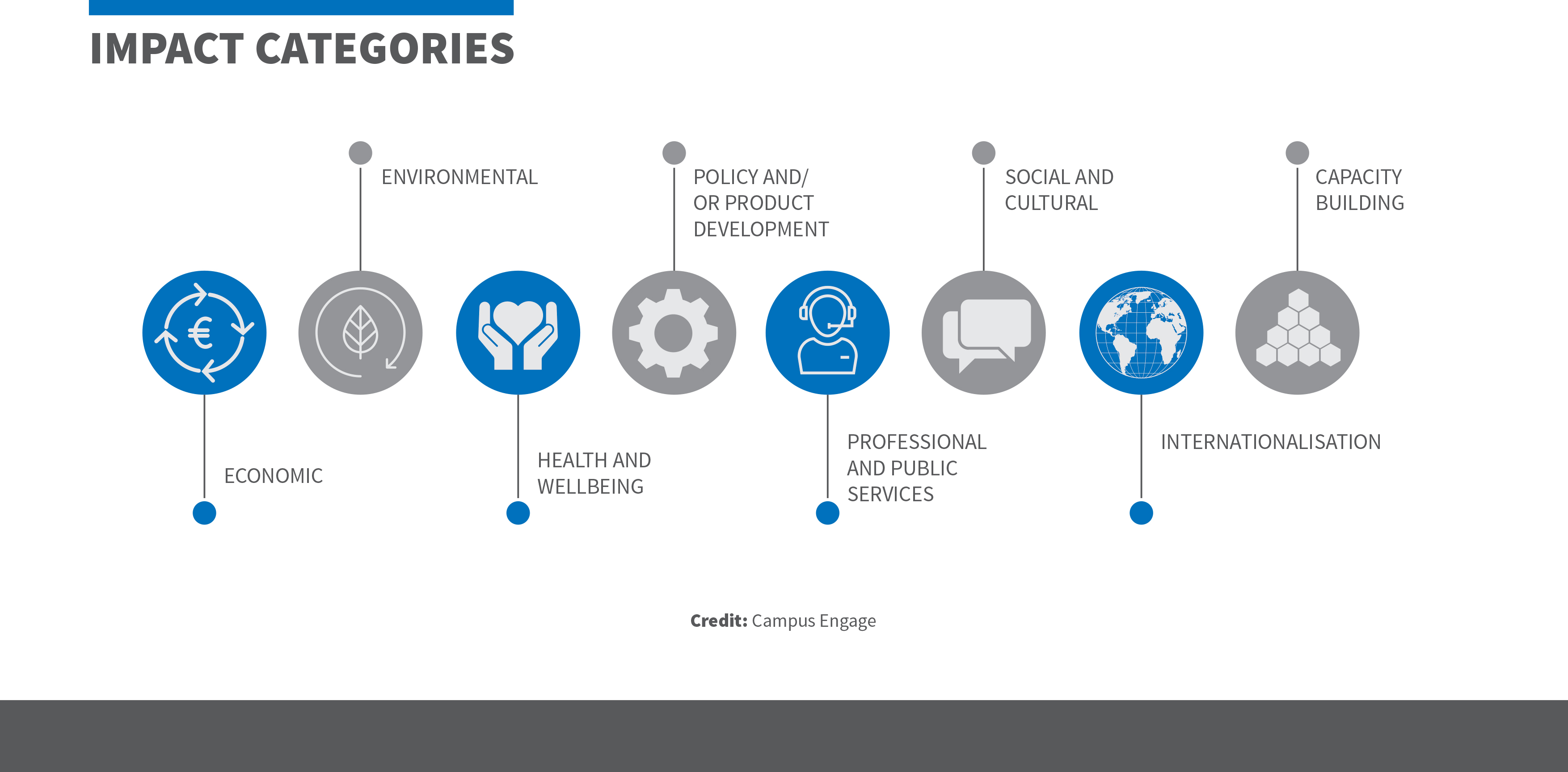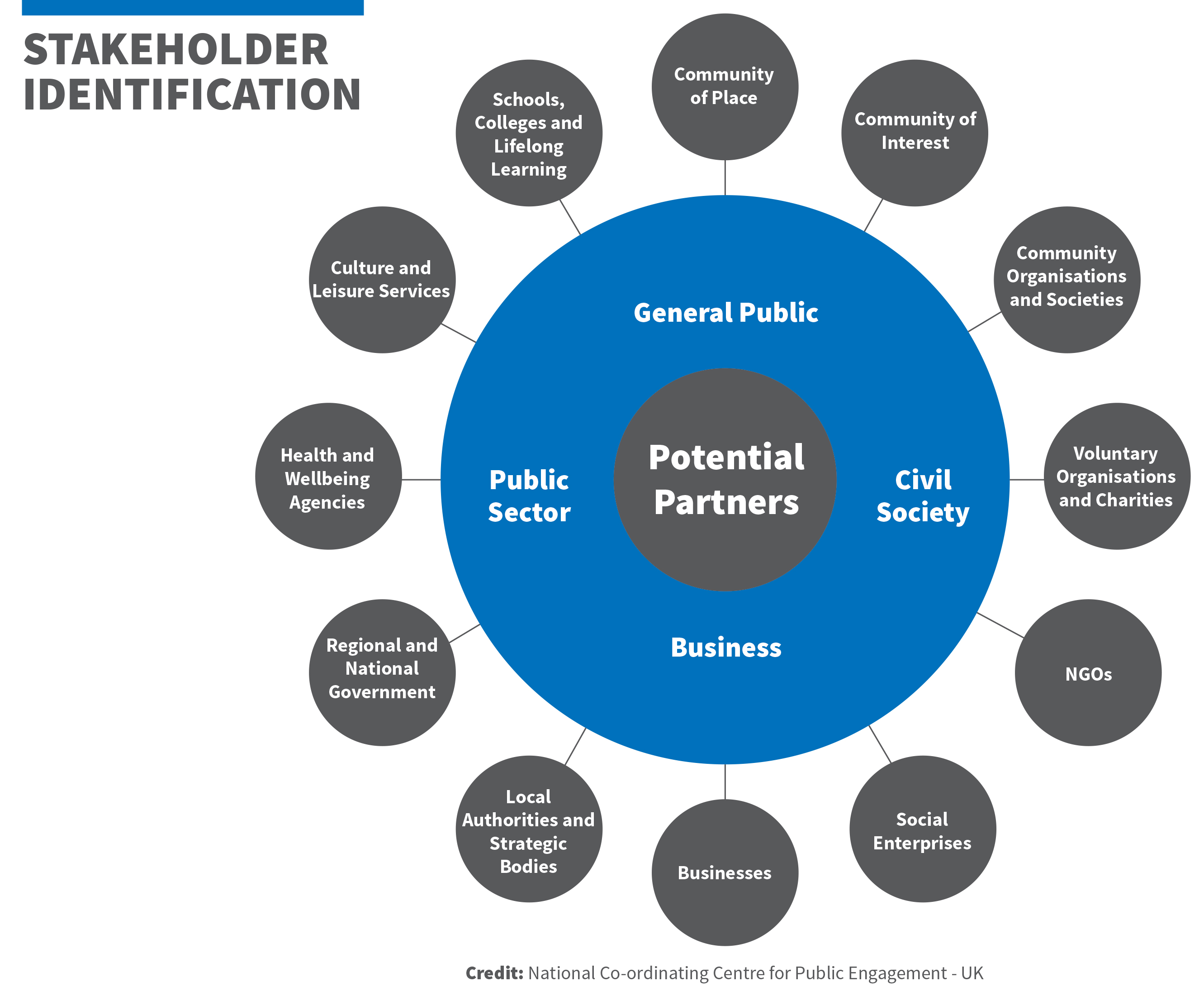4. The Impact Section
In the Impact section, you should again respond to the question as it has been asked but you should ensure that there is a mechanism for PPI input into the pathways to impact. Where impact exists for your research can best be thought of in the context of the Campus Engage Impact Framework:

The Campus Engage framework, under each category listed above, provides prompts that can suggest where the impact may lay. For example, under Economic impact, it asks where the impact is in:
- New or expanded products, licenses, or services created
- Spinout or start-up businesses registered
- Improved performance or processes adopted
- Employment created or increased
- Improved international reputation for investment in Ireland
- More efficient use of public resources
- Leveraging of national and international funding
- Increased income generated
- Reduced redundancies and costs
- Conceptual impact
It is not necessary to have an impact under each category, but it is important to consider where, reasonably, your findings may have an impact. The Campus Engage Impact Framework will help to discover and refine the nature of that impact.
It is then important that there is a reasonable pathway that will create that impact. For example, if you claim a potential impact as ‘an end to the use of fossil fuels globally’, it is unlikely that you will have a clear pathway in achieving that. If, however, your impact is a 2% reduction in the use of fossil fuels in Ireland and you can show a clear pathway between your results and influence on the policy process that might implement such a reduction, that is more compelling and believable for a funder.
A Note on who is a PPI Contributor
Most research projects have a number of stakeholders, defined as “individuals, organizations or communities that have a direct interest in the process and outcomes of a project, research or policy endeavour” (Deverka et al, 2012). To have a clear pathway to impact, it will be important to engage a number of different stakeholders. The UK’s National Centre for Public Engagement have a useful diagram to consider who your stakeholders are:

Concannon et al (2012) identify these stakeholders, in patient-centred outcome research, as ‘the seven Ps’:
- Patients and the public,
- Providers of care,
- Purchasers of care,
- Payers of medical costs,
- Policymakers (along with NGO policy advocates),
- Product makers (such as pharma),
- Principal Investigators.
Having a number of these stakeholders involved with a research project can be extremely beneficial. Involving a mix of stakeholders is fundamental to Engaged Research, of which PPI is a subset. PPI, however, is creating a space specifically for the patient, the service user, the carer, the person who is the ultimate beneficiary of the health service.

